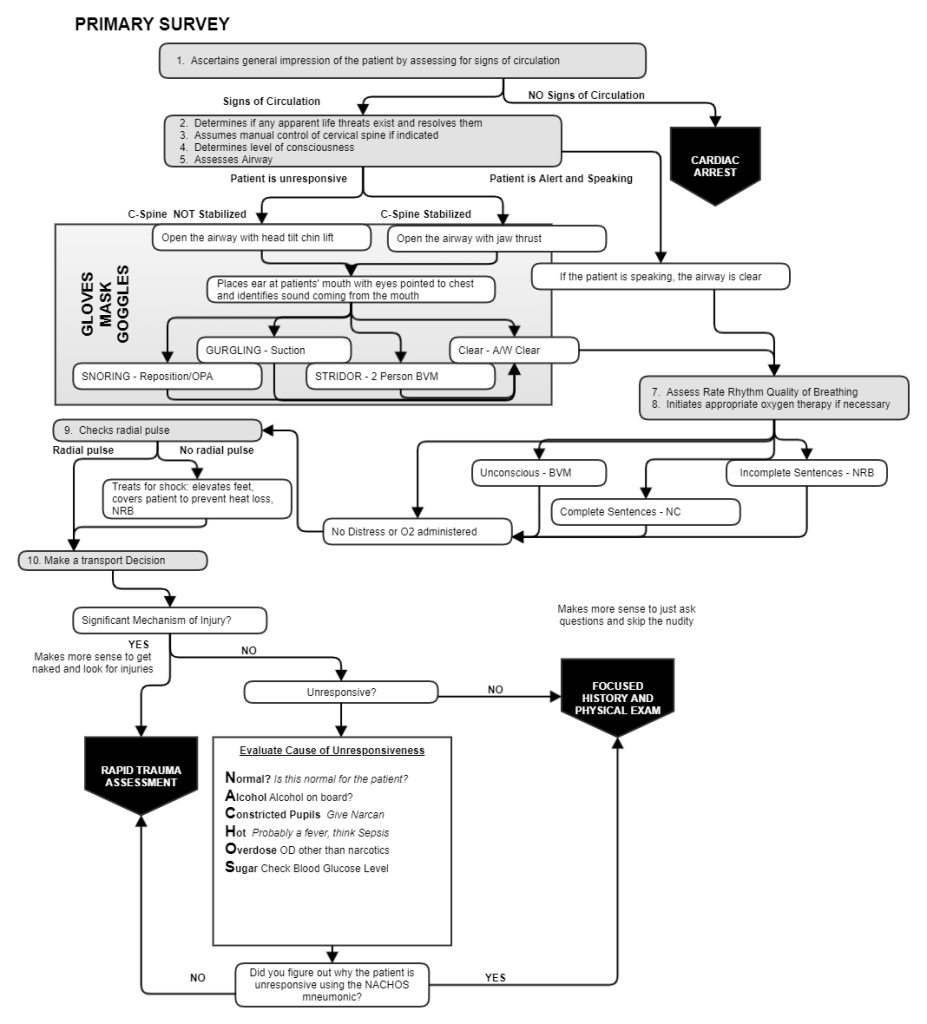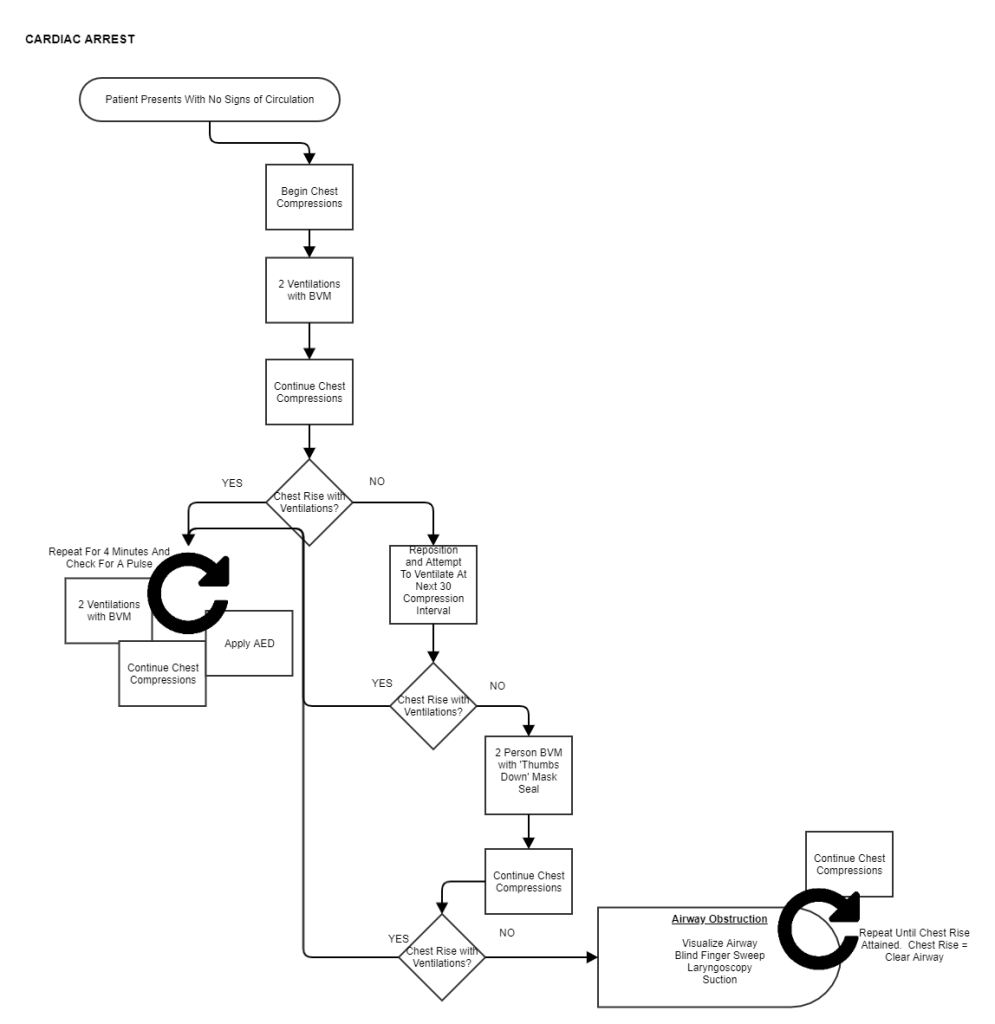No Signs Of Circulation
Published (updated: ).

Signs of circulation are any movement that would indicate the patient is alive
Imagine a patient sitting in a chair awaiting the arrival of the ambulance crew. The patient see the medics come through the doorway. The patient can’t help but think help has arrived. The medics look at the same patient and say to themselves, “SIGNS OF CIRCULATION – CPR NOT INDICATED – STAND DOWN“.

The very first observation EMS should have about their patient is whether or not the patient needs CPR. If the patient doesn’t have signs of circulation, CPR must be initiated immediately. What are signs of circulation. Human beings are only completely motionless when their heart stops beating. A foot will move, the patient may make a sound, the patient’s chest will move because they are breathing.
If none of these signs of circulation are present, then it’s time to initiate CPR. First look at the patient and ask them if they need CPR. “DO YOU NEED CPR?” is a bold statement that would certainly wake up the dead.

If no response is heard, it’s time to start CPR. Immediately assume the CPR position next to the patient’s shoulders, find a landmark, and begin chest compressions. Alert the other rescuers to the situation so they can bring a bag valve mask and AED. The minute chest compressions are initiated, patient assessment is over. Chest compressions work in a cycle that is repeated until either the arrest has been terminated or the patient’s pulse returns (ROSC).
If the patient who is conscious tells the medics that their airway is clear, and unresponsive patient provides evidence that their airway is clear with chest rise and air movement coming out of their mouths, how does a patient in cardiac arrest tell the rescuers that the airway is clear? The cardiac arrest patient airway is assessed anytime a rescuer attempts to ventilate. If the rescuer is unable to achieve chest rise with ventilations, then either one of two things are wrong:
- The rescuer who is ventilating is unable to get a mask seal
- The airway is obstructed
If the rescuer is unable to get chest rise, employ another rescuer to seal the mask to the face with their hands and the first rescuer to squeeze the bag. These measures should all but guarantee chest rise. If the chest is not rising after these measures, consider the possibility of a foreign body airway obstruction. The good news is that the cure for foreign body airway obstruction on an unconscious patient is CPR. While the chest compressions are being executed, the ventilator(s) can look into the patient’s mouth to see if the obstruction has popped out of the mouth. Nonetheless, continue efforts to ventilate as the obstruction may have been removed, only ended up somewhere the rescuers cannot see.
